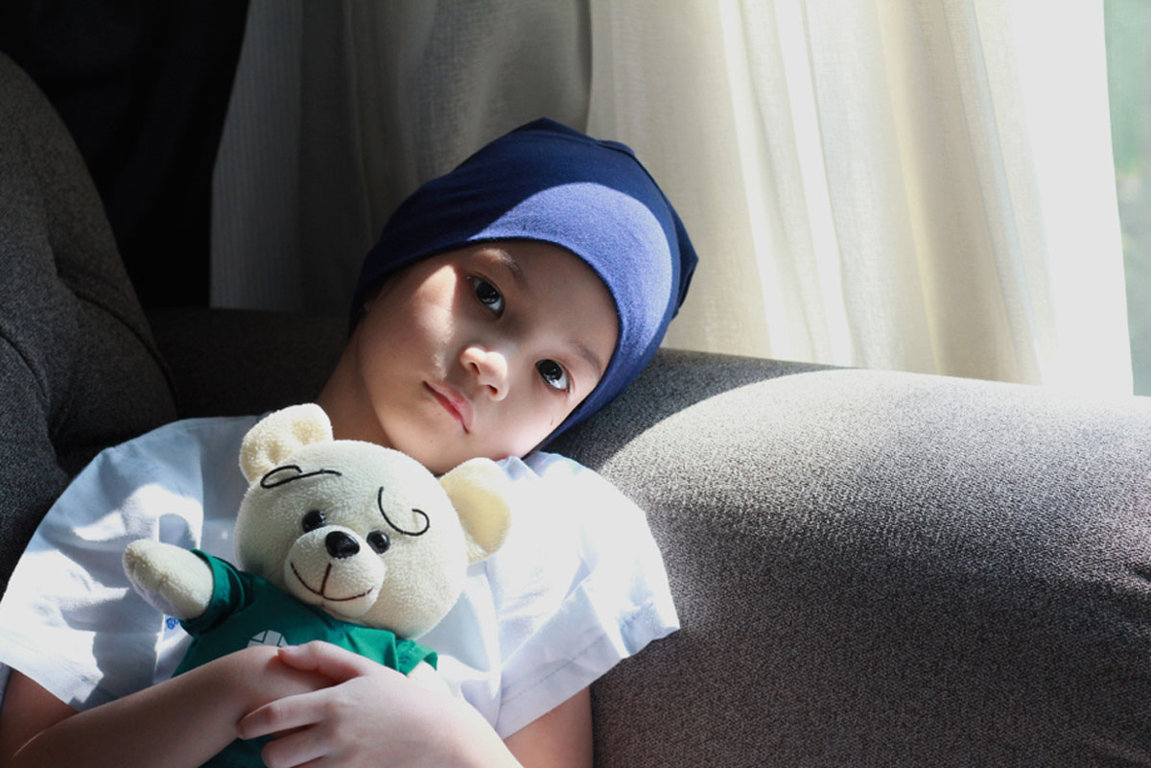
Childhood Malignancies is actually cancer in children which can occur anywhere in the body including blood, brain, spinal cord and other organs and tissues. It is an uncommon disease that is developed when healthy cells change and grow out of control. These cancer cells form a mass known as tumor that is malignant, meaning it can grow and affect to other parts of the body. There are many types of cancer, among them the one that appears in the retina (the part of the eye that processes the light of photoreceptor cells and sends the data to the brain) is known as Retinoblastoma. This is a rare disease that takes place in a child at the age of two, and is rarely found in children of six years.
Childhood Malignancies Symptoms
Some of the symptoms that can be detected easily are:
- When shining a light or taking a photo, the pupil appears to have a white or pink glow instead of red.
- An eye or eyes appear larger than normal
- Cloudiness or discoloration in the center of the eye
- Eye pain
- Eyes that cross or look in different directions
- Redness in the white of the eye
- Visionproblems
Childhood Malignancies Diagnosis
In order to diagnose retinoblastoma in a child, an eye doctor looks closely at the inside of the eye with a strong light and a magnifying lens. Usually when the ophthalmologist shine a light in the child’s eye, the pupil appears red because of the blood in vessels in the back of the eye. In the case of retinoblastoma, the pupil often appears white or pink instead of red. Thus indicating that the child might be having retinoblastoma, the next step for the ophthalmologist would be to find out how big the tumor is and whether or not it has spread. For this, the eye doctor may recommend your child to have one of these tests:
- An ultrasound is a machine that produces sound waves create pictures of the eye
- An MRI (magnetic resonance imaging) has powerful magnets and radio waves to make detailed images of the eye.
- A CT scan (computed tomography) takes several X-rays from different angles that are put together to show more information.
Childhood Malignancies Treatments
The treatments for retinoblastoma are available at the Hashmanis Group of Hospitals, where our team of expert ophthalmologists are ever ready to diagnose and treat the disease. The sooner the retinoblastoma is found the greater are the chances to save a child’s vision from permanent vision loss. To treat this disease, the eye surgeon usually uses a combination of treatments such as:
Chemotherapy
Depending on the spread of the cancer, powerful drugs are given to help shrink the tumor. This is done by either injecting the drug directly into the eye or into the blood vessels that lead to it or by medication.
Cryotherapy
This works best in small tumors that are in front of the eye. In this the eye doctor uses a metal probe that freezes and kills cancer cells.
Thermotherapy
This treatment is suitable for both, small and long tumors. The eye surgeon uses a special laser that kills cancer cells with heat.
Laser Therapy
This laser treatment is suitable for small tumors in the eye. With the help of the laser, the eye doctor is able to target and destroy the blood vessels that supply the tumor.
Radiation
There are two kinds of radiation therapy used, depending on the growth of the cancer.
- The eye surgeon sews a disc containing radioactive material inside it, onto the eyeball which is near the tumor. In this treatment the child is admitted in the hospital for a few days, while the disk works on the tumor. After a few days the disk is removed. This treatment is suitable for small tumors.
- This treatment only works when other strategies don’t. A machine is used to focus beams of radiation on the tumor.
Surgery
If the tumor found in the eye is very large, then the child’s vision cannot be saved and with the aid of surgery the eye is removed.
